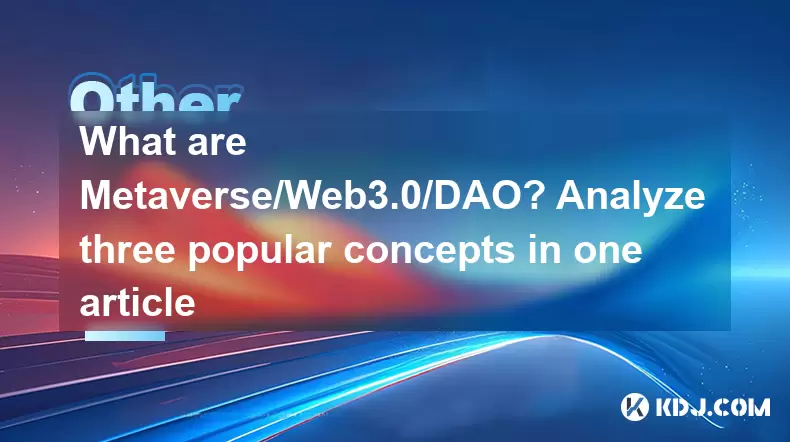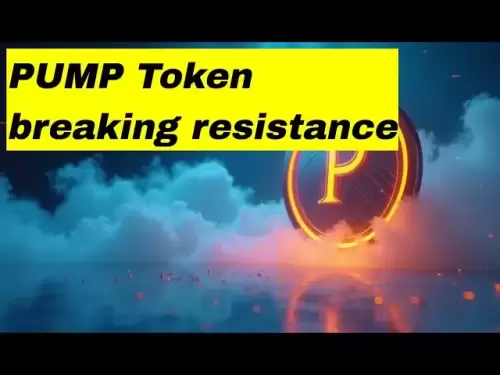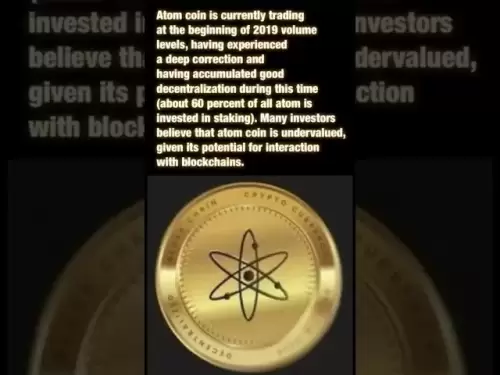-
 Bitcoin
Bitcoin $115200
-2.68% -
 Ethereum
Ethereum $3601
-5.16% -
 XRP
XRP $3.035
-2.96% -
 Tether USDt
Tether USDt $0.9997
-0.04% -
 BNB
BNB $764.5
-5.43% -
 Solana
Solana $168.1
-5.92% -
 USDC
USDC $0.9998
-0.02% -
 Dogecoin
Dogecoin $0.2090
-4.80% -
 TRON
TRON $0.3272
-0.49% -
 Cardano
Cardano $0.7306
-5.00% -
 Hyperliquid
Hyperliquid $39.16
-12.22% -
 Stellar
Stellar $0.3967
-4.96% -
 Sui
Sui $3.566
-5.95% -
 Chainlink
Chainlink $16.55
-6.57% -
 Bitcoin Cash
Bitcoin Cash $552.3
-3.90% -
 Hedera
Hedera $0.2516
-4.69% -
 Avalanche
Avalanche $21.99
-5.75% -
 Toncoin
Toncoin $3.621
-0.28% -
 Ethena USDe
Ethena USDe $1.000
-0.03% -
 UNUS SED LEO
UNUS SED LEO $8.951
0.02% -
 Litecoin
Litecoin $105.9
-3.59% -
 Shiba Inu
Shiba Inu $0.00001232
-5.00% -
 Polkadot
Polkadot $3.640
-5.55% -
 Uniswap
Uniswap $9.048
-7.03% -
 Monero
Monero $301.8
-1.51% -
 Dai
Dai $0.9999
-0.01% -
 Bitget Token
Bitget Token $4.334
-3.66% -
 Pepe
Pepe $0.00001064
-6.17% -
 Cronos
Cronos $0.1367
-5.78% -
 Aave
Aave $259.2
-4.59%
What are Metaverse/Web3.0/DAO? Analyze three popular concepts in one article
The Metaverse, Web3.0, and DAOs are reshaping the crypto world, offering decentralized, user-controlled digital spaces and governance.
Jun 14, 2025 at 04:14 pm

The cryptocurrency landscape has seen the rise of several innovative concepts that are reshaping the digital world: Metaverse, Web3.0, and Decentralized Autonomous Organizations (DAOs). Each of these concepts brings unique elements to the table, promising to revolutionize how we interact with digital spaces and each other. This article delves into these three popular concepts, exploring their definitions, functionalities, and potential impacts on the cryptocurrency ecosystem.
What is the Metaverse?
The Metaverse is a collective virtual shared space, created by the convergence of virtually enhanced physical reality and physically persistent virtual space. It's a digital universe where users can interact with each other and digital objects in a seemingly real environment. The Metaverse is not a single platform but a network of interconnected virtual worlds that can be accessed through various devices, from VR headsets to smartphones.
In the context of cryptocurrency, the Metaverse is powered by blockchain technology, ensuring that virtual assets and transactions are secure and verifiable. Non-Fungible Tokens (NFTs) play a crucial role in the Metaverse, allowing users to own and trade unique digital items such as virtual real estate, art, and avatars. Platforms like Decentraland and The Sandbox are prime examples of how the Metaverse is being developed and monetized using cryptocurrencies.
Understanding Web3.0
Web3.0 represents the next evolution of the internet, characterized by a shift from centralized to decentralized systems. Unlike Web2.0, which is dominated by large tech companies that control user data and content, Web3.0 aims to return control to users through blockchain technology. This new iteration of the web is built on principles of decentralization, privacy, and user empowerment.
In the cryptocurrency world, Web3.0 is closely linked to the development of decentralized applications (dApps) that run on blockchain networks like Ethereum. These dApps allow users to interact with services without intermediaries, ensuring transparency and security. Smart contracts are a fundamental component of Web3.0, automating transactions and agreements between parties without the need for a central authority.
Decentralized Autonomous Organizations (DAOs)
DAOs are organizations represented by rules encoded as a computer program that is transparent, controlled by the organization members, and not influenced by a central government. In the cryptocurrency space, DAOs are built on blockchain technology, enabling members to vote on decisions and proposals directly, without the need for traditional hierarchical structures.
DAOs are particularly relevant in the context of decentralized finance (DeFi), where they can manage and govern protocols and platforms. For example, MakerDAO is a well-known DAO that governs the Maker Protocol, which issues the stablecoin DAI. Members of the DAO can vote on changes to the protocol, such as interest rates and collateral types, ensuring that the platform evolves in line with community needs.
The Intersection of Metaverse, Web3.0, and DAOs
The concepts of Metaverse, Web3.0, and DAOs are interconnected and often overlap in the cryptocurrency ecosystem. The Metaverse relies on Web3.0 technologies to create a decentralized and user-controlled environment, while DAOs can govern and manage the virtual worlds within the Metaverse.
For instance, in a Metaverse platform like Decentraland, users can buy virtual land using cryptocurrency, and the platform itself is governed by a DAO. This combination of technologies ensures that the virtual world is not only immersive and interactive but also transparent and democratic. Web3.0 provides the infrastructure for these interactions, enabling seamless and secure transactions within the Metaverse.
Practical Applications and Examples
To understand how these concepts are applied in real-world scenarios, let's look at some practical examples:
Decentraland: As mentioned earlier, Decentraland is a virtual world built on the Ethereum blockchain. Users can buy, sell, and develop virtual land parcels, creating anything from art galleries to virtual casinos. The platform is governed by a DAO, where landowners can vote on policy changes and platform developments.
The Sandbox: Similar to Decentraland, The Sandbox is a user-generated Metaverse where players can create, own, and monetize their gaming experiences using NFTs. The platform uses Web3.0 technologies to ensure that all transactions and ownership are secure and verifiable.
Uniswap: While not directly related to the Metaverse, Uniswap is a prime example of a Web3.0 application. It's a decentralized exchange (DEX) that allows users to swap tokens without intermediaries. Uniswap is governed by a DAO, where token holders can vote on proposals and changes to the protocol.
Challenges and Considerations
While the concepts of Metaverse, Web3.0, and DAOs hold significant promise, they also face several challenges. Scalability is a major concern, especially for the Metaverse, which requires high-performance networks to support millions of users and complex virtual environments. Regulatory uncertainty is another issue, as governments and regulatory bodies are still grappling with how to classify and regulate these new digital spaces and organizations.
Additionally, user adoption remains a hurdle. For Web3.0 and DAOs to truly take off, they need to be accessible and user-friendly, which can be challenging given the technical complexity of blockchain technology. Security is also paramount, as decentralized systems are not immune to hacks and vulnerabilities.
Frequently Asked Questions
Q: How can someone get started with participating in the Metaverse?
A: To get started with the Metaverse, one can follow these steps:
- Choose a platform: Select a Metaverse platform like Decentraland or The Sandbox.
- Set up a wallet: Create a cryptocurrency wallet compatible with the platform, such as MetaMask for Ethereum-based platforms.
- Purchase cryptocurrency: Buy the required cryptocurrency (e.g., ETH) from an exchange and transfer it to your wallet.
- Explore and engage: Start exploring the virtual world, buying virtual assets, and participating in community events.
Q: What are the main differences between Web2.0 and Web3.0?
A: The main differences between Web2.0 and Web3.0 include:
- Centralization vs. Decentralization: Web2.0 is centralized, with data and control in the hands of large tech companies. Web3.0 is decentralized, with data and control distributed among users.
- Data Ownership: In Web2.0, users often have little control over their data. In Web3.0, users have full ownership and control over their data.
- Intermediaries: Web2.0 relies on intermediaries for transactions and services. Web3.0 uses blockchain technology to eliminate intermediaries, ensuring direct peer-to-peer interactions.
Q: How do DAOs ensure fair governance?
A: DAOs ensure fair governance through the following mechanisms:
- Voting: Decisions are made through voting, where each member's voting power is typically proportional to their token holdings.
- Transparency: All proposals and votes are recorded on the blockchain, ensuring transparency and accountability.
- Smart Contracts: Governance rules are encoded in smart contracts, which automatically enforce the outcomes of votes, reducing the risk of manipulation or bias.
Q: Can anyone create a DAO, and what are the steps involved?
A: Yes, anyone can create a DAO. Here are the steps involved:
- Define the purpose: Clearly outline the purpose and goals of the DAO.
- Choose a blockchain: Select a blockchain platform like Ethereum that supports smart contracts.
- Draft the smart contract: Write the smart contract that will govern the DAO, including rules for voting, membership, and fund management.
- Deploy the DAO: Deploy the smart contract on the chosen blockchain.
- Invite members: Promote the DAO and invite members to join and participate in governance.
- Manage and govern: Regularly manage the DAO, propose and vote on changes, and ensure the organization stays true to its purpose.
Disclaimer:info@kdj.com
The information provided is not trading advice. kdj.com does not assume any responsibility for any investments made based on the information provided in this article. Cryptocurrencies are highly volatile and it is highly recommended that you invest with caution after thorough research!
If you believe that the content used on this website infringes your copyright, please contact us immediately (info@kdj.com) and we will delete it promptly.
- Navigating the Crypto Market: Bitcoin, Trader Experience, and Avoiding the Noise
- 2025-08-02 00:50:12
- Deep Agents, AI Task Management, and Evolution AI: A New Era?
- 2025-08-02 00:50:12
- SPX6900, BlockDAG, and Miner Sales: A New York Minute on Crypto Trends
- 2025-08-01 23:30:15
- BlackRock, XRP ETF, and Ripple: Is the Perfect Storm Brewing?
- 2025-08-01 22:50:11
- Solana ETF Momentum Builds: Will SOL Join the Institutional Party?
- 2025-08-02 00:10:15
- Cardano (ADA) Breakout Watch: Is the Sleeper About to Wake Up?
- 2025-08-02 00:10:16
Related knowledge

What is the difference between a blockchain and a database?
Aug 01,2025 at 09:36pm
Understanding the Core Structure of a BlockchainA blockchain is a decentralized digital ledger that records data in a series of immutable blocks linke...

How to start a business using blockchain?
Jul 28,2025 at 12:36am
Understanding the Basics of Blockchain TechnologyBefore diving into the process of starting a business using blockchain, it's crucial to understand wh...

What is a token on the blockchain?
Jul 21,2025 at 07:00am
Understanding the Concept of a TokenIn the realm of blockchain technology, a token is a digital representation of an asset or utility that exists on a...

Can blockchain be used for identity verification?
Jul 18,2025 at 02:14pm
Understanding Identity Verification in the Digital AgeIn the modern digital landscape, identity verification has become a critical component for ensur...

What is a consensus mechanism in blockchain?
Jul 21,2025 at 03:01am
Understanding the Basics of Consensus MechanismsA consensus mechanism is a critical component of any blockchain network. It refers to the process by w...

How to explain blockchain to someone with no tech background?
Jul 18,2025 at 11:08pm
Understanding the Basics of BlockchainTo explain blockchain to someone with no tech background, it's essential to start with simple analogies and avoi...

What is the difference between a blockchain and a database?
Aug 01,2025 at 09:36pm
Understanding the Core Structure of a BlockchainA blockchain is a decentralized digital ledger that records data in a series of immutable blocks linke...

How to start a business using blockchain?
Jul 28,2025 at 12:36am
Understanding the Basics of Blockchain TechnologyBefore diving into the process of starting a business using blockchain, it's crucial to understand wh...

What is a token on the blockchain?
Jul 21,2025 at 07:00am
Understanding the Concept of a TokenIn the realm of blockchain technology, a token is a digital representation of an asset or utility that exists on a...

Can blockchain be used for identity verification?
Jul 18,2025 at 02:14pm
Understanding Identity Verification in the Digital AgeIn the modern digital landscape, identity verification has become a critical component for ensur...

What is a consensus mechanism in blockchain?
Jul 21,2025 at 03:01am
Understanding the Basics of Consensus MechanismsA consensus mechanism is a critical component of any blockchain network. It refers to the process by w...

How to explain blockchain to someone with no tech background?
Jul 18,2025 at 11:08pm
Understanding the Basics of BlockchainTo explain blockchain to someone with no tech background, it's essential to start with simple analogies and avoi...
See all articles

























































































